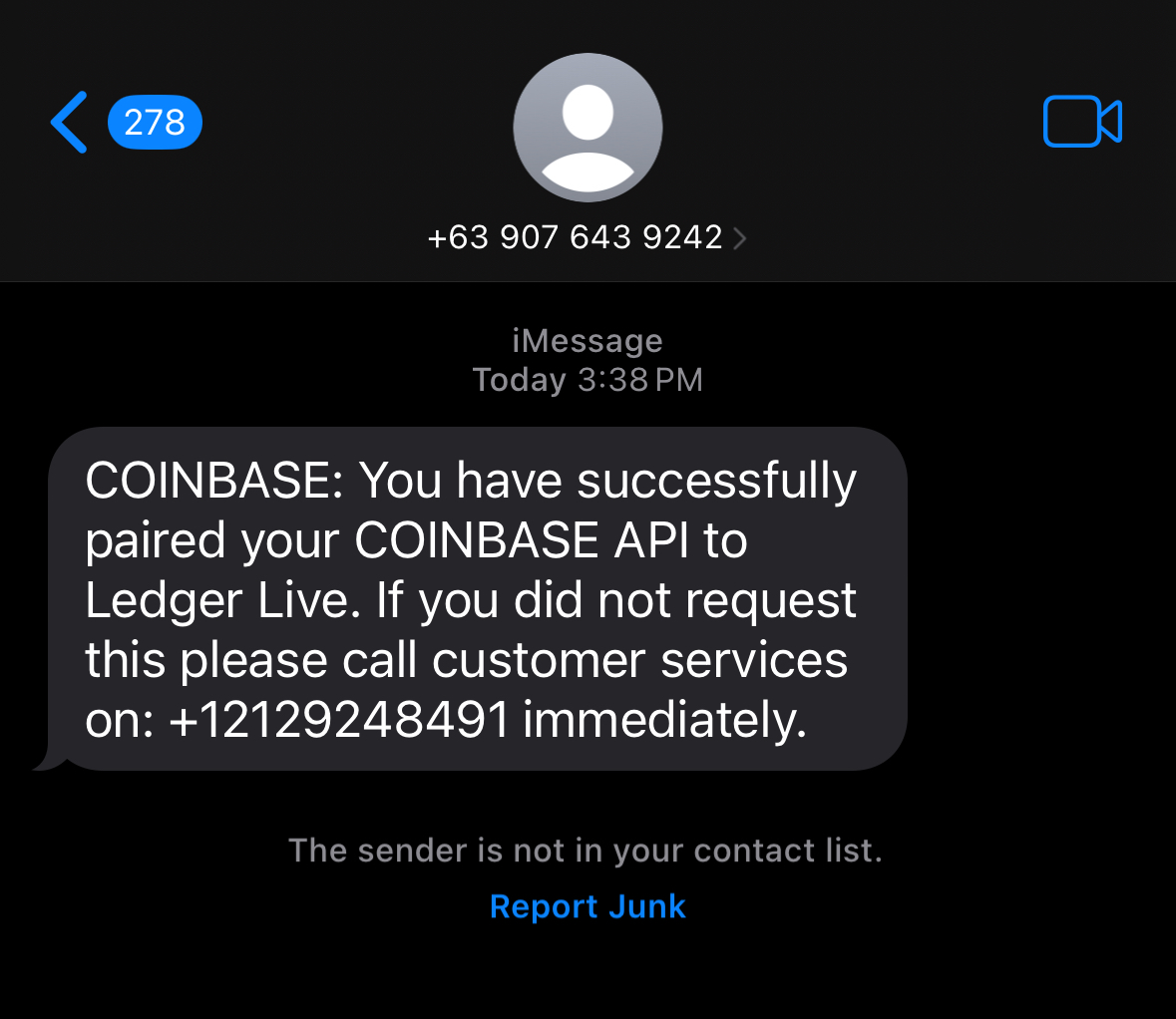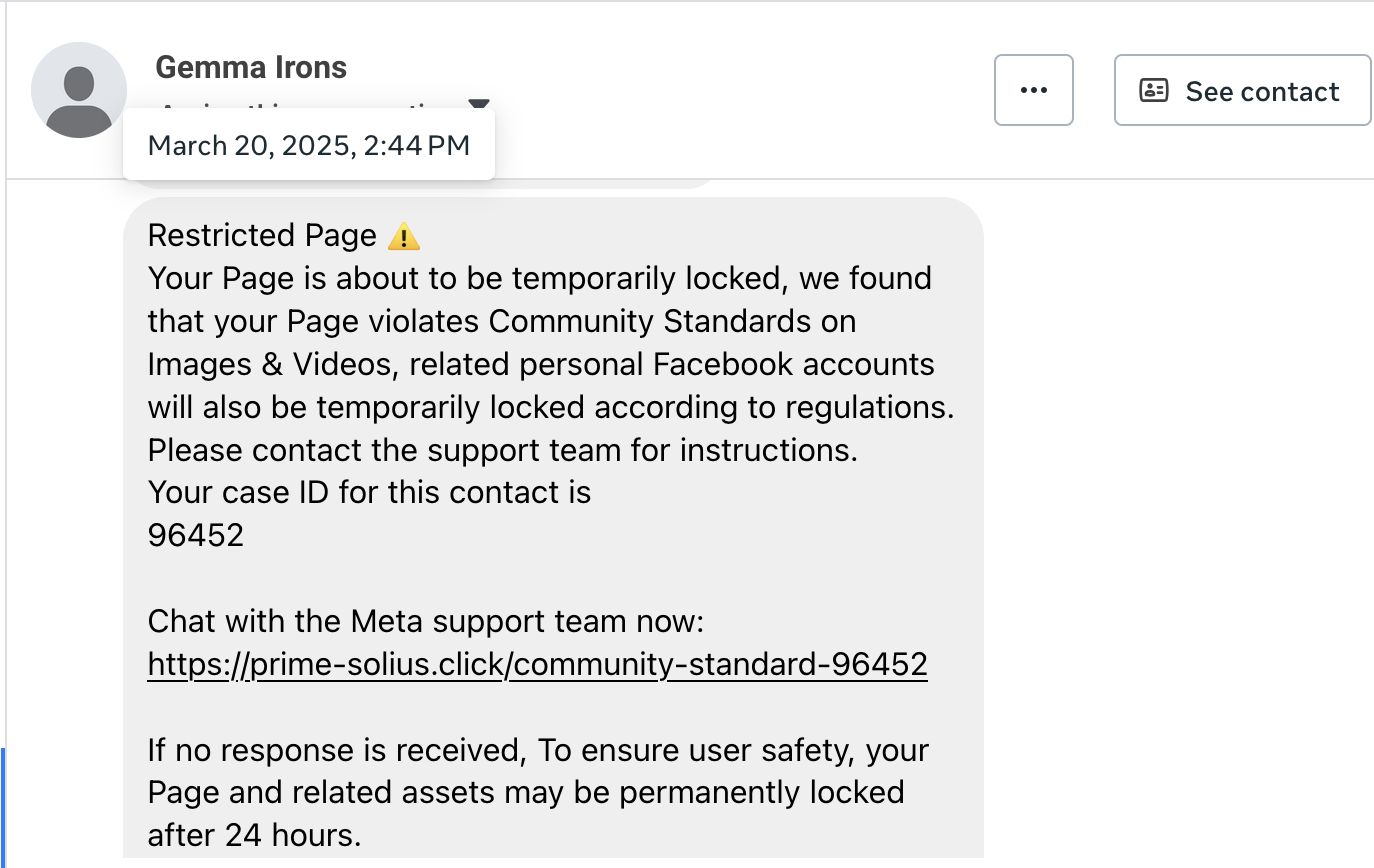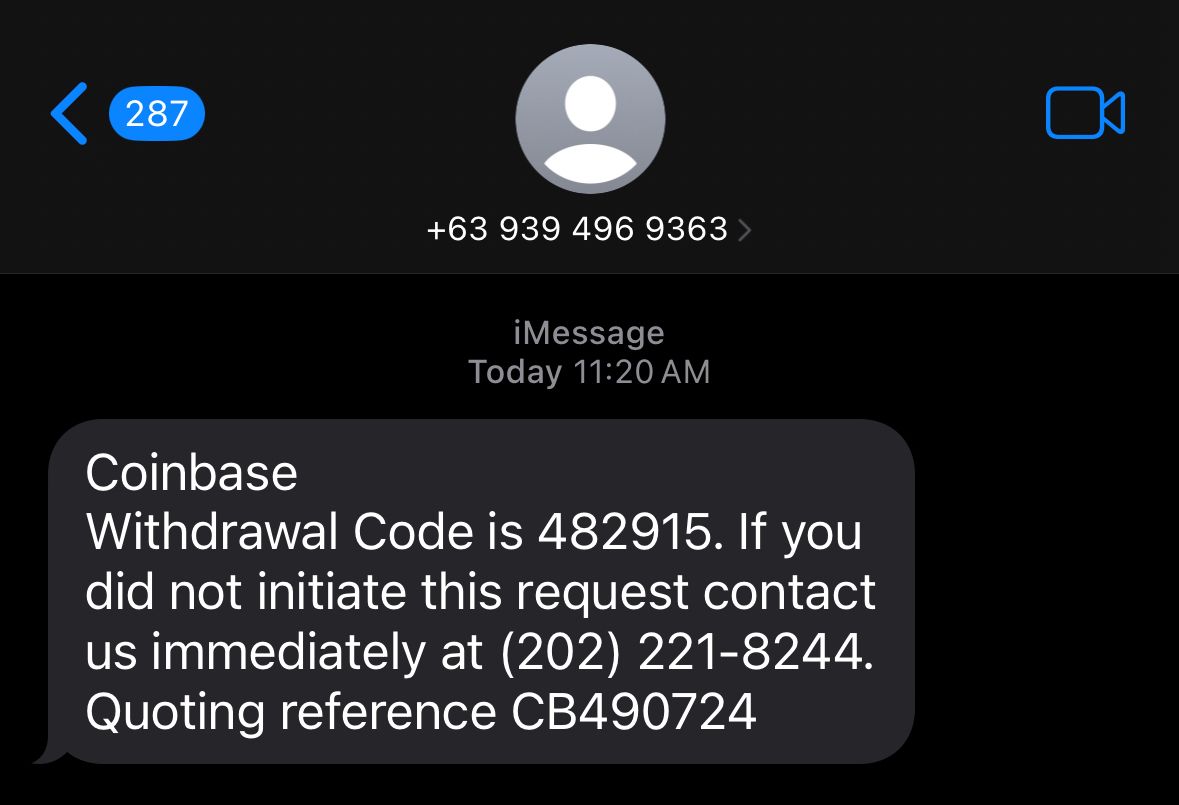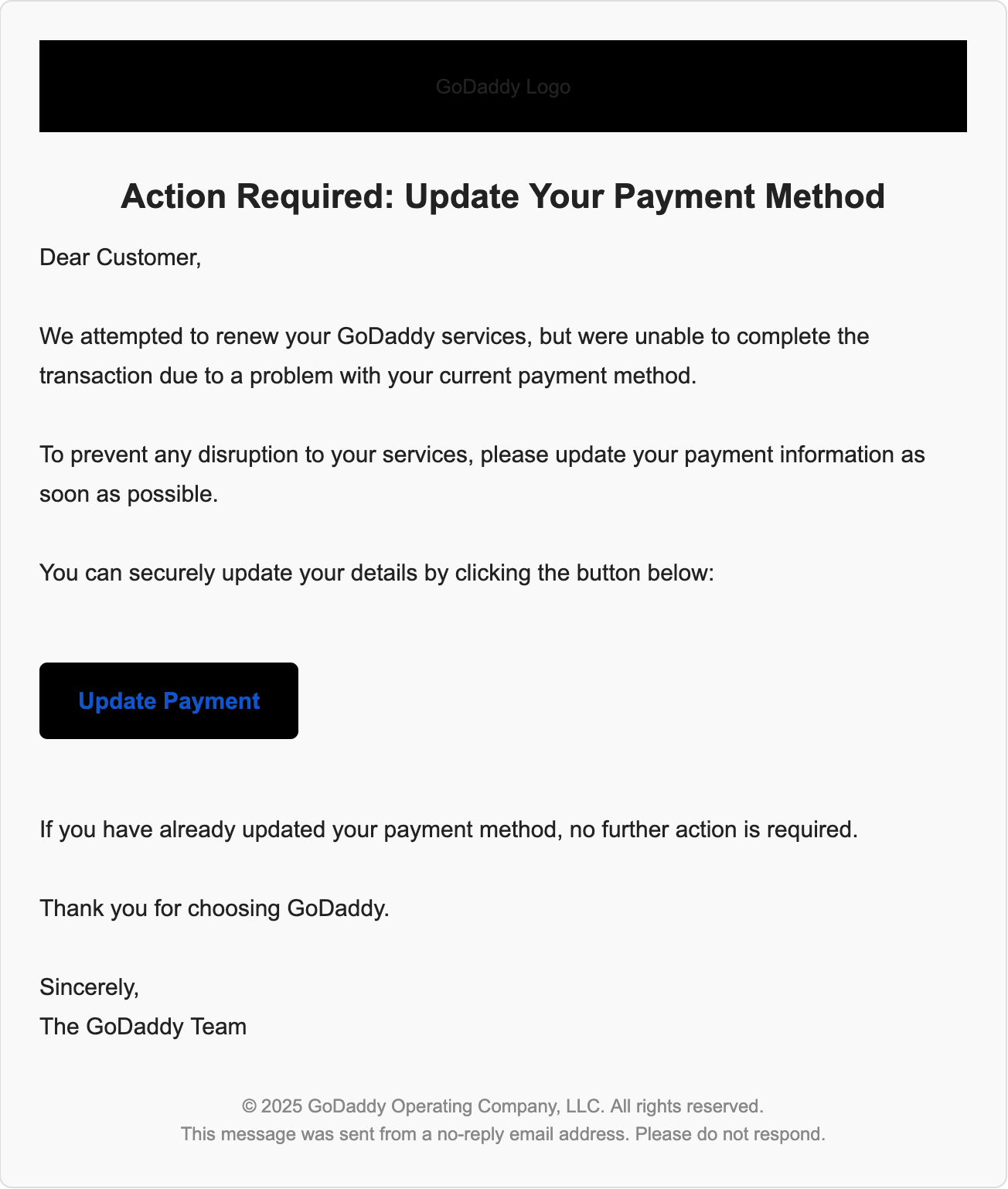Phishing
Attempts to trick victims into revealing credentials or sensitive info by impersonating trusted services.
Below are real, recent examples from our archive. Use the filters to narrow by channel or search within this category.
Tip: If you didn’t expect a refund, invoice, or prize — pause and verify using a trusted website or phone number, not the link you received. See common red flags.

Coinbase Pairing Scam
Scammers impersonate Coinbase and send fake alerts claiming that your Coinbase account has been paired with an external service (such as Ledger Live) without your authorization. The message pressures you to call a fake support number where scammers attempt to steal your login details, 2FA codes, or crypto assets.

Facebook Page Violation Scam
Scammers pretend to be Meta/Facebook and claim your Facebook Page broke Community Standards. They warn your Page will be locked within 24 hours unless you “contact support” or “appeal” using a link they provide. The link goes to a fake login or “support chat” page designed to steal your Facebook password and 2FA codes. Once they get in, scammers can take over your Page, run ads on your card, or message your followers.

Fake Company Survey with Free Gift Scam
Scammers pretend to be well-known companies, like AAA or other membership services, and send emails inviting you to take a quick survey about your recent experience. The message often promises a free reward—such as a gift card, roadside kit, or other “thank you” item—for completing the survey. The link in the email doesn’t go to the real company. Instead, it leads to a fake site that either tries to steal your personal details, trick you into entering payment info for shipping, or installs harmful software on your device.

Law Firm / Legal Notice Impersonation Scam
Scammers pretend to be a law firm or legal team representing a known company. They email small businesses saying there are “issues” with the website (logos, reviews, privacy notice, or ads). The message sounds friendly and “cooperative,” and often includes a Word document (.docx) with “details” they want you to review. The aim is to make you open the attachment or contact them so they can push you to share information, install software, or pay a “resolution” fee.

Phishing Attacks Using Real Company Notifications
Scammers are finding ways to use real notification emails sent by legitimate companies (like Facebook, Google, or Microsoft) to hide their phishing attacks. By registering fake accounts, business pages, or events on these platforms, they can include their scam website links in places like group names or business portfolio names. The real company then sends out official-looking emails—including the scam link—directly to users. Because these emails come from trusted sources, it’s easy to fall for the scam and click on the malicious link, which usually leads to a fake login page designed to steal your username and password.

Subscription Billing Update Phishing
Scammers send emails or texts that look like they’re from a subscription or streaming service, saying your payment failed or your card expired. They warn your account will be paused soon unless you “update billing.” The link or button takes you to a fake website that copies the real brand’s look to steal your login, credit card, and personal details. Common examples include messages pretending to be from Netflix, Amazon Prime, Hulu, Disney+, Spotify, or Apple. Red flags include urgent deadlines (24–48 hours), generic greetings, small spelling mistakes, and links that don’t lead to the company’s official website.

Unauthorized Withdrawal Alert Scam
Scammers pretend to be from your bank, payment app (Zelle, Cash App, PayPal), crypto exchange, or broker and claim a withdrawal or transfer is about to happen. The message pushes you to click a link or call a number “right now” to stop it. The goal is to get your password and one‑time codes, or to talk you into moving money to the scammer’s “safe” account.

Update Payment Details Scam
Scammers send emails or texts pretending to be from companies you pay each month (like domain providers, streaming services, or utilities). The message claims your recent payment failed or your card expired and urges you to “update your payment details” to avoid service interruption. The link takes you to a fake sign‑in or billing page designed to steal your account password and credit card information.
Not seeing your example in Phishing? Sharing real screenshots helps others spot the red flags faster.
Report a scam